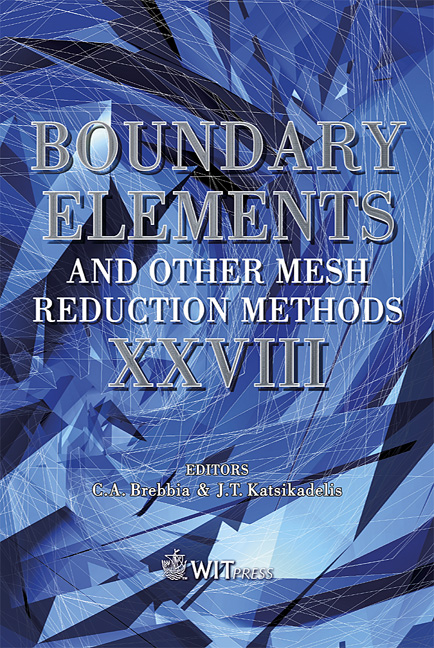Bumps Modeling Using The Principal Shear Stresses
Price
Free (open access)
Transaction
Volume
42
Pages
10
Published
2006
Size
484 kb
Paper DOI
10.2495/BEM060051
Copyright
WIT Press
Author(s)
P. P. Prochazka & A. Yiakoumi
Abstract
In several previous papers by the authors the problem of bumps occurrence has been solved by distinct element methods, namely by the free hexagon method. The latter method proved its significance in the description of the most probable nucleation of debonding of rock mass, when cracks or flaws occurred, which at the moment of bumps create the contact surface of the moving part of the coal seam. The movement of particles after bumps is described. In this paper another approach is used. Starting with the aim of describing whether the bumps occur or not, or under which condition they appear, the continuum of both the rock seam and the overburden (rock) is considered. The decision whether the bumps are triggered can then be derived from conditions at different points of the coal seam. For the solution, the boundary element method is used and elastic behavior (more precisely brittle behavior of the material of coal) is assumed. Keywords: bumps in deep mines, the most probable disconnecting curve, slip condition, constitutive behavior. 1 Introduction Bumps or rock bursts are phenomenon, which occurs in deep mines and mostly it is qualified as a sudden release of internal energy concentrated at the face of the the shaft in longwall mining. This extreme concentration can be caused by material changes in the overburden rock massif, of distant local disturbances, like creation of cracks, emission of gas, human activities in the neighborhood of the site of mining, etc. In any case, it is necessary not to forget the fact that along the upper part of the shaft where the ceiling and the rock are in contact, a tip of a crack (notch) causes a natural accumulation of energy. From classical theories
Keywords
bumps in deep mines, the most probable disconnecting curve, slip condition, constitutive behavior.





